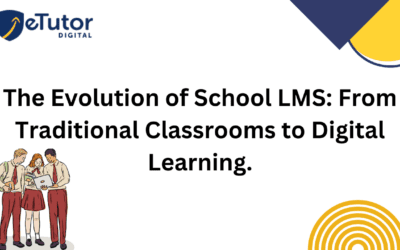Top 7 Benefits of LMS for Educational Institutions | eTutor
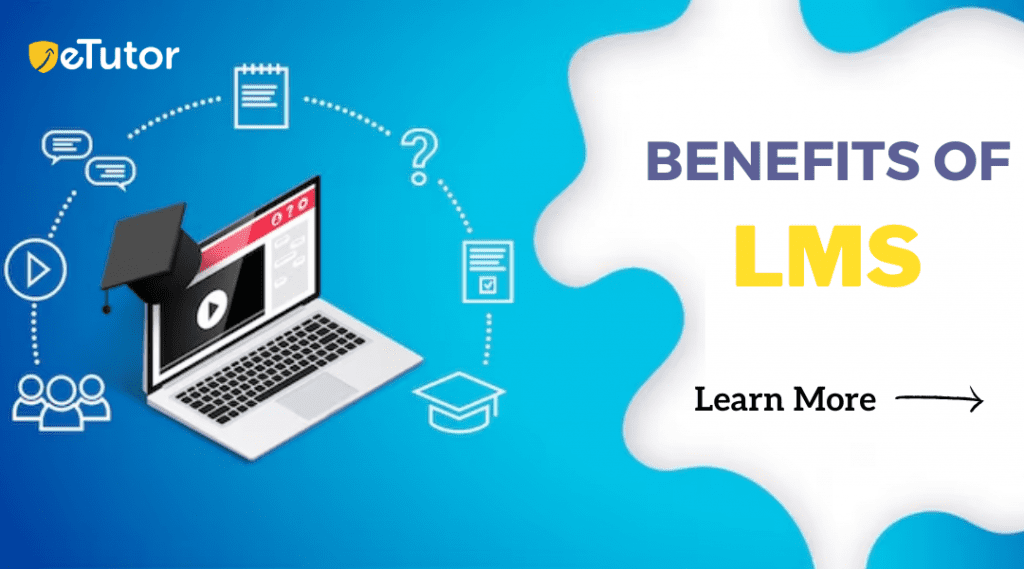
Table of Contents
ToggleIntroduction
Learning management systems (LMS) are being used by an increasing number of educational institutions to manage their online education programs as technology advances.
An LMS is an integrated platform that allows teachers and students to manage and deliver educational content and resources, track student progress and performance, and collaborate in a virtual environment. In this blog, we’ll explore the benefits of LMS for educational institutions.
What are the 7 Benefits of a Learning Management System?
A learning management system (LMS) provides numerous advantages to both individuals and organizations. Here are a few important benefits of adopting an LMS:
1. Improved Learning Experience
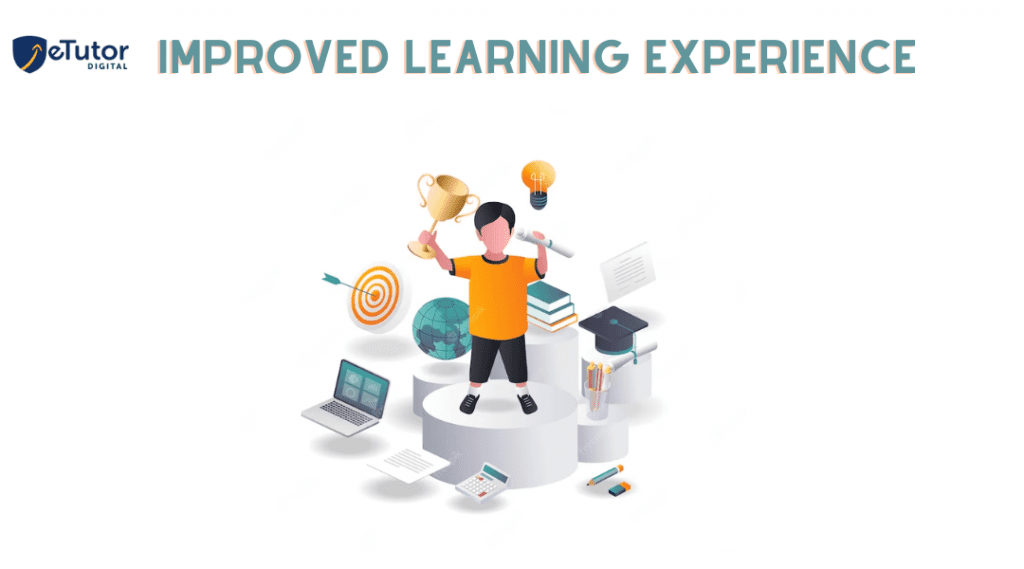
One of the main benefits of LMS is that it can provide an enhanced learning experience for students. With an LMS, students can access a wide range of educational content and resources, including multimedia resources, online discussions, and interactive quizzes and assessments. This not only makes learning more engaging and interactive but also allows students to learn at their own pace and on their own schedule.
2. Improved Communication

Another key benefit of LMS is improved communication between teachers and students. An LMS provides a centralized platform for teachers to communicate with their students, providing a more efficient way to share course materials, send announcements, and provide feedback. Additionally, students can use the benefits of LMS to communicate with their peers, ask questions, and participate in discussions, which can help build a sense of community and engagement in the online classroom.
3. Increased Flexibility

An LMS also provides increased flexibility for educational institutions. With an Educational Learning Management System , educational content and resources can be accessed from anywhere, at any time, providing greater flexibility for students and teachers alike. This can be especially valuable for non-traditional students, such as adult learners or students with work or family obligations, who may not be able to attend traditional classes on a set schedule.
4. Streamlined Administration

In addition to improving the student learning experience, an LMS can also streamline administrative tasks for educational institutions. An LMS can be used to automate administrative tasks such as grading, tracking attendance, and generating reports, freeing up valuable time and resources for teachers and administrators.
5. Improved Accessibility
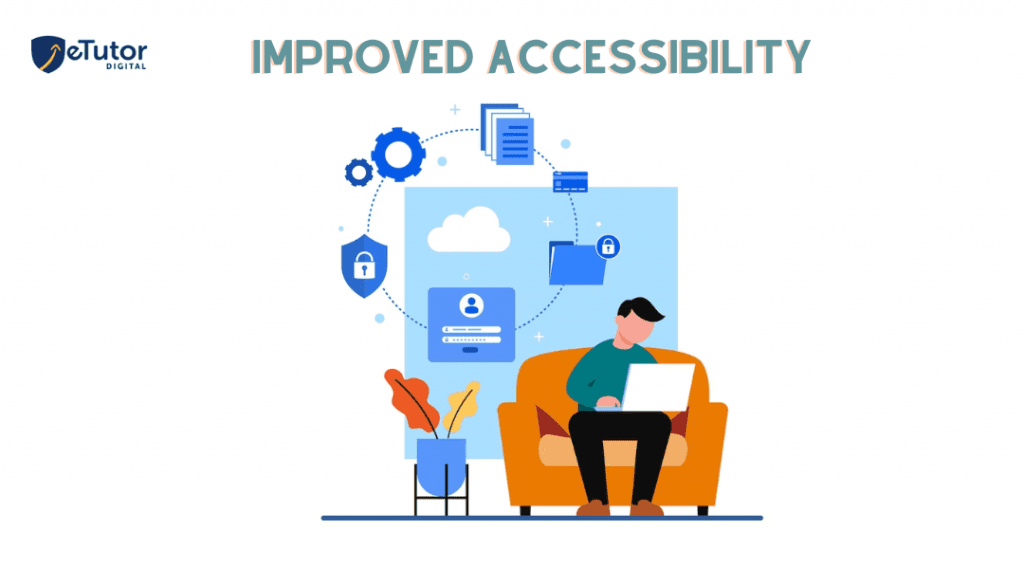
An LMS can also help improve accessibility for students with disabilities. By providing a centralized platform for educational content and resources, an LMS can make it easier for students with visual, hearing, or other disabilities to access course materials. Additionally, some school LMS features and benefits like closed captions or text-to-speech capabilities make educational content more accessible to students with disabilities.
6. Better Data Management
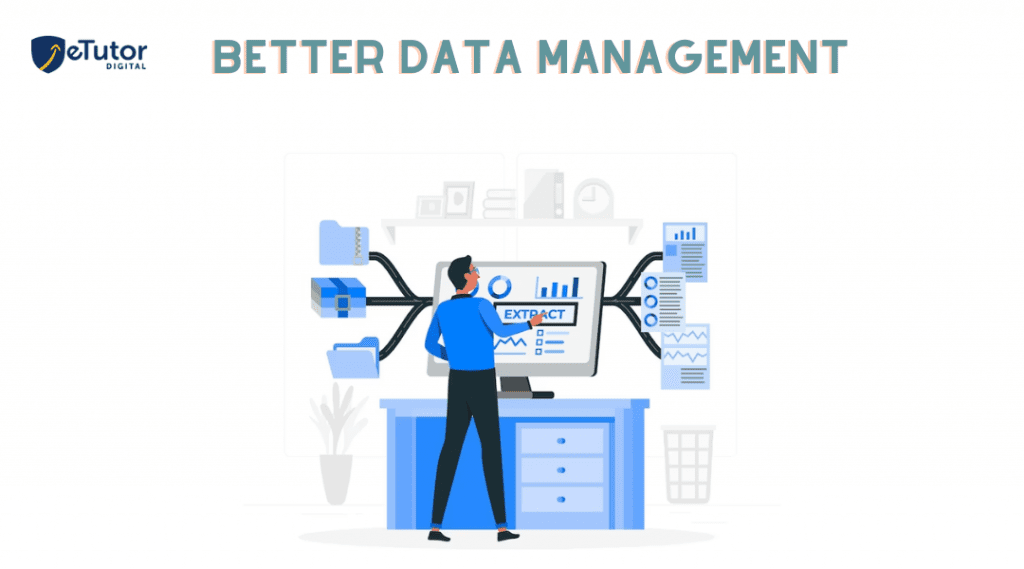
An LMS can also provide better data management for educational institutions. By tracking student progress and performance, an LMS can help teachers and administrators identify areas where students may be struggling and provide targeted support. Additionally, an LMS can generate reports on student progress and performance, which can be used to inform curriculum development and instructional design.
7. Cost-Effective

Finally, an LMS can be a cost-effective solution for educational institutions. While there may be an initial investment required to implement an LMS, the long-term cost savings can be significant.
An LMS can help reduce the need for physical classroom space, textbooks, and other traditional educational materials, saving schools money in the long run.
Unlock the Full Potential of Your School with AI-Powered LMS!
Get a Free Demo Today!How to Choose the Right LMS for Your Organization
As the world continues to embrace digital transformation, many organizations are turning to learning management systems (LMS) to manage their training programs. An LMS is an integrated platform that allows organizations to manage and deliver training content and resources, track employee progress and performance, and collaborate Learning in a virtual environment.
With numerous LMS options, selecting the right one for your institution can be challenging. Please follow these steps to choose the best LMS for schools , universities, and organizations to help you learn.
1. Identify Your Objectives

Before selecting an LMS, it’s essential to identify your organization’s training objectives. What do you hope to achieve with your training program? Are you looking to improve employee performance, reduce training costs, or increase employee engagement?
Once you’ve identified your objectives, you can begin to evaluate LMS options based on their ability to meet your specific needs.
2. Evaluate Features and Functionality

Once you’ve identified your training objectives, it’s time to evaluate LMS options based on their features and functionality. Look for an LMS that offers features such as content management, assessment and evaluation tools, reporting and analytics, and mobile compatibility.
Additionally, consider whether the LMS integrates with other systems used by your organization, such as HR software or customer relationship management (CRM) software.
3. Consider User Experience

The user experience is a critical factor in the success of an LMS. Look for an LMS that is intuitive and easy to use, with a user-friendly interface and clear navigation.
Additionally, consider whether the LMS offers customization options, such as the ability to brand the platform with your organization’s logo and color scheme.
4. Assess Scalability and Security
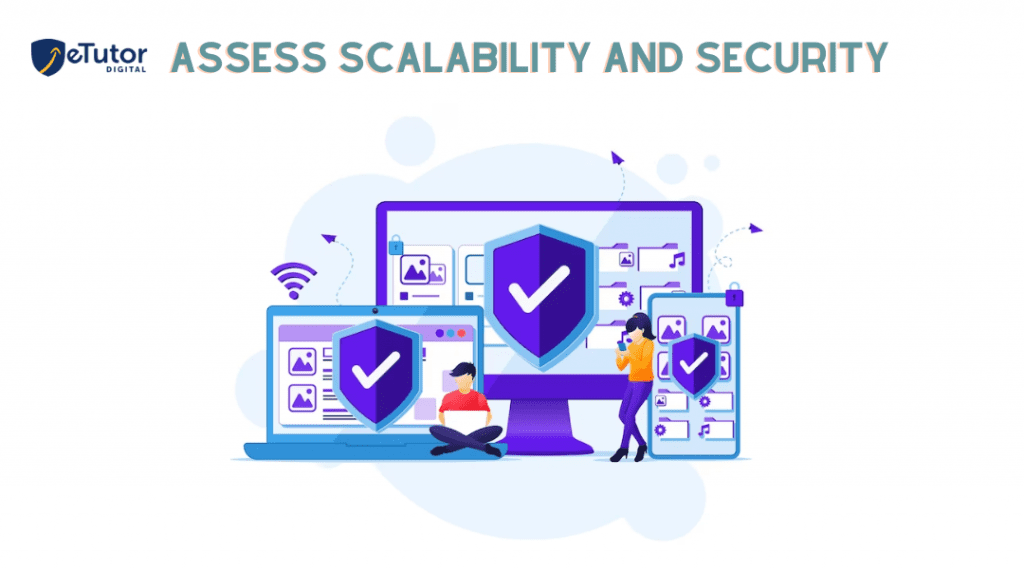
As your organization grows and evolves, your training needs will likely change. When selecting an LMS, consider whether the platform is scalable and can accommodate future growth.
Additionally, consider the LMS , such as data encryption and user authentication, to ensure the protection of sensitive data.
5. Evaluate Support and Training Options
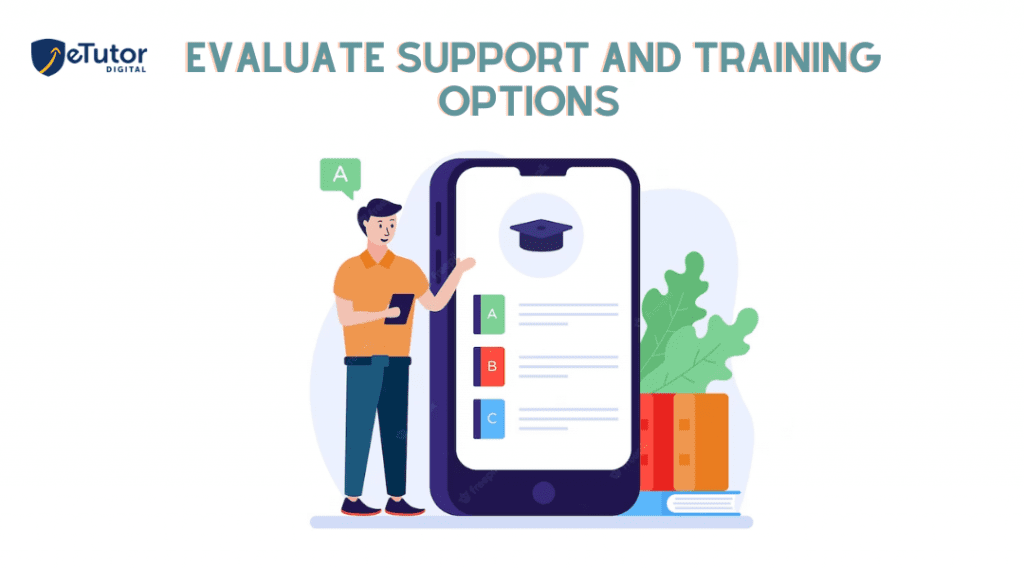
Implementing an LMS can be a complex process, and it’s essential to have access to support and training resources. When evaluating LMS options, consider the level of support and training offered by the vendor.
Look for an LMS vendor that offers comprehensive training resources, such as online tutorials and webinars, as well as ongoing support through email, phone, or live chat.
6. Consider Cost and ROI
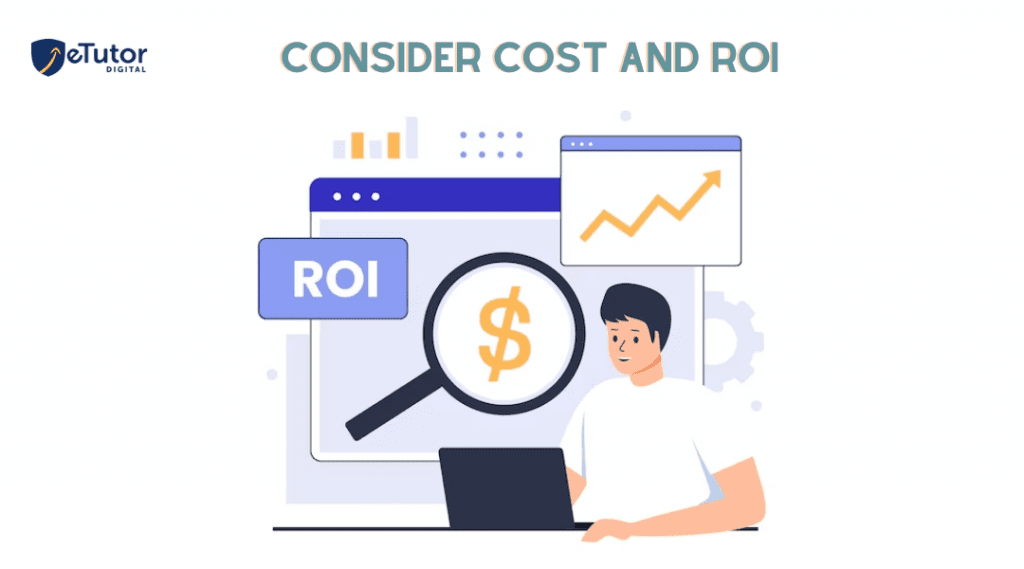
Finally, it’s important to consider the cost and return on investment (ROI) of the LMS. While cost should not be the only factor in your decision, it’s essential to evaluate the total cost of ownership, including licensing fees, implementation costs, and ongoing maintenance and support costs. Additionally, consider the ROI of the LMS, including the potential impact on employee performance and the cost savings from reduced training costs.
Find the Perfect LMS for your Team and boost🚀 your training game!
Get Started Now!What does a learning management system do?
A learning management system (LMS) is a software application or platform for managing, delivering, and tracking various learning and training Programme . It acts as a central organizing and administration centre for educational courses, training materials, exams, and other related activities. An LMS typically provides the following main functions and features:
1. Course Management:
A learning management system (LMS) enables instructors and administrators to develop, organise, and manage courses. They can create course structures, post instructional materials including documents, presentations, videos, and audio files, and control access for different users.
2. User Management:
LMSs make user enrollment and maintenance easier. Instructors and administrators have the ability to add and delete learners, assign them to specific courses or groups, and track their progress along the learning experience.
3. Content Delivery:
LMSs serve as a platform for delivering learning information to students. Multimedia presentations, interactive modules, e-books, quizzes, and discussion forums are all examples of this. These materials are available to learners at their own speed and convenience.
4. Assessments and Grading:
LMSs include tools for producing and delivering assessments including as quizzes, tests, assignments, and surveys. Instructors can create grading criteria and automate the evaluation process. Learners can receive quick feedback on their performance and track their development.
5. Communication and Collaboration:
LMSs include tools for producing and delivering assessments including as quizzes, tests, assignments, and surveys. Instructors can create grading criteria and automate the evaluation process. Learners can receive quick feedback on their performance and track their development.
6. Progress Tracking and Reporting:
LMSs offer extensive tracking and reporting features. Learner participation, progress, and performance can be tracked by instructors and administrators. They can create reports, analytics, and statistics to evaluate course effectiveness and identify areas for improvement.
7. Administration and Management:
Administrative tools in LMSs allow you to manage system settings, user roles, permissions, and access control. They offer backup tools, user authentication, and data security.
8. Integration and Extensibility:
LMSs can be linked to other systems and technologies like as student information systems, content creation tools, video conferencing platforms, and e-commerce systems. This facilitates data transmission and improves the overall learning experience.
Discover How eTutor School LMS Can Transform Learning & Enhance Productivity
See the Power of eTutor LMS Now!Conclusion
An LMS can provide numerous benefits for educational institutions, including enhanced learning experiences for students, improved communication between teachers and students, increased flexibility, streamlined administration, improved accessibility, better data management, and cost-effectiveness. By leveraging the power of an LMS, educational institutions can provide a more engaging and efficient educational experience for their students, while also saving time and resources.
selecting the right LMS for your organization requires careful consideration of your training objectives, evaluation of features and functionality, assessment of scalability and security, evaluation of support and training options, and consideration of cost and ROI. By following these steps and selecting an LMS that meets your organization’s specific needs, you can improve the efficiency and effectiveness of your training programs and achieve your business objectives.
FAQS
A learning management system (LMS) benefits an organization’s training and development initiatives by providing a centralized platform to deliver, manage, and track educational courses and training programs. It enables organizations to streamline their training efforts, track learner progress, and ensure consistent and standardized learning experiences.
Using an LMS for employee onboarding and orientation offers several advantages. It allows new employees to access training materials and complete orientation courses online, reducing the time and resources required for in-person training. An LMS also ensures that all employees receive consistent onboarding experiences and enables them to progress at their own pace.
An LMS helps organizations track and monitor employee progress and performance through its tracking and reporting features. Administrators can easily monitor learner engagement, completion rates, and assessment scores. This data helps identify areas of improvement, personalize learning interventions, and measure the effectiveness of training programs.
An LMS is highly beneficial for delivering and managing compliance training. It enables organizations to create and deliver standardized compliance modules, track completion rates, and generate reports to demonstrate compliance. By automating these processes, an LMS ensures that employees receive essential compliance training and helps organizations meet regulatory requirements.
Streamline Learning, Boost Engagement, and Drive Success with the Right LMS!
Talk To eTutor LMS Experts Now!Recent Posts
- How School ERP Software Maximizes Productivity and Minimizes Cost
- How Does ERP Software for Schools Help Educators?
- Why Educational Institutions Need Online Exam Software in 2025
- How Is AI-Based ERP Software Transforming School Administration?
- Latest IIT-JEE & NEET Exam Trends 2025 | Key Changes in JEE, NEET 2025 Exams By NTA




